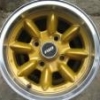Leaderboard
Popular Content
Showing content with the highest reputation on 12/12/18 in all areas
-
Stripped hubs are from the cone washer being ridged and not seating properly, the concave washer being put on backwards and not holding torque, or not torquing the axle nut enough. From a physics standpoint, I don't see how the lift could have anything to do with it. Dan3 points
-
Stripped hubs are because of improper installation and bad cone washers, etc. Has nothing to do with the lift. Everything to do with the quality of the mechanic. GD2 points
-
Turbo models don't have head gasket problems. Never have. Those engine often go about 250k. Then they are just shot. Main line journals get too out of spec and they throw rods. GD2 points
-
That brake rotor does not look good. The shiny / wear area should go a lot further in to the center.2 points
-
Yes it is possible. If it is coolant coming through the vents try it on defrost. The "fog" should leave a greasy film on the inside of the windshield if it really is coolant. Antifreeze fumes also have a sickly sweet smell that is very noticeable.2 points
-
1 point
-
get a meter and check it. My alt. had a bad diode, outputting 12V. Slowly leading to a dead battery.1 point
-
That's still really funny to me. Folks who think that clearly never had any older Subarus. EA81s are a whopping 82 hp from the factory. The ever loved 2.2 only put out 135 hp. They say they barely bumped the hp for the 2018+, but I swear mine's much faster than the first gen Xtreks that I've owned.1 point
-
Well, 13.5 (or not too much more) is okay - that's what a 12V lead-acid requires for charging. Thing is, rp2813 is reporting somewhat intermittent behaviour, so while the voltmeter may say it's fine while it's in the driveway, 20 miles down a bumpy road may be a different matter. A tanked alternator is easy; to manually induce the failure in an intermittent one not so much. That's why, if it's reading >13.5V in the driveway, the best way to determine whether it's at fault is to replace it, keep driving, and see if the problem reappears. But there's no disagreement here - all of the above answers are correct.1 point
-
1 point
-
Its easy actually. urn everything on, rev the engine to 1800 RPM and take a volt reading. If its no 13.9 its a bad alt. Every alt I ever had go bad went this way. Fine during the day but cant keep up at night or in bad weather when everything is on.1 point
-
Yeah, USMB s a great place. And don't worry about it being "2 sophisticated!"1 point
-
Never heard of 6 star. For these engines. I would go by what GD wrote. I have not had to do one of these newer engines yet. I have done a few older ones, and used Fel pro, which is the only brand I have seen recommended other than oem.1 point
-
1 point
-
Overview: If your stock carbureted Subaru EA engine feels Gutless, slower than it used to be, and some times, it overreacts during acceleration and sounds louder while your subie runs like a bat out of hell, and the Hitachi Carburetor has a Vacuum Operated Secondary (high) Stage; I Bet that the Vacuum actuator that activates it, is failing. Even with non failing vacuum activated secondaries; I've made Mechanical Conversions on those carburetors, always with Great Results. The Difference between the Vacuum operated and the Mechanically operated Secondaries (high) Stages, lies in the Moment for Reaction, and how the engine reacts to your acceleration behaviour; let me explain: In the vacuum operated carbs, the Secondary (high) Stage which gives the "Power", will work depending on the engine's vacuum; which depends on RPMs, and thus means that it will work accelerating indirectly; while on the Mechanically operated carbs, the "Power" is always there, to react at your very will, each time you press the Gas Pedal, and thus means that the acceleration is Directly. The mechanically activated secondary (High) stage on the Weber carburators and its Robust, pure smart simplicity, are the main factors why a Weber Carb is super desirable on the Carburated EA engines; it also helps you to get rid of tons of unuseful things from the crowded engine bay... on those states in USA with not too restrictive laws, regarding pollution control. But if you can't afford a Weber carb, or don't want to do ~► the Weber Carb Swap Job, then a Mechanical Conversion on your Hitachi Carb will help your ride to be more reactive to your accelerating behaviour. There is absolutely No Downsides with such Mechanical Conversion on the Carburator, if it is Done properly. How to do the Mechanical Conversion: Prior to explain that, I must say this: If you really don't understand and don't have too much mechanical experience, then I kindly suggest you to Ask to a Qualified Mechanic with Knowledge / Experience in Carburetors, to do that Mechanical Conversion for you, instead of trying it by yourself; because to instal a badly assembled / damaged carb, could be pretty Dangerous in many different ways, so Be Careful! (Disclaimer: Use all the info I post, at your own Risk) Basically talking, the Mechanical conversion is done at follows: ► Remove the Vacuum actuator attached to the secondary (High) Stage, along all its hardware, ► close any open threads with screws; ► then attach a piece of hard, inox wire, firmly secured to the mechanism that opens the primary (low) stage Butterfly, which is directly connected to the accelerator plate, (in the other side) where the accelerator cable goes. ► Then, Twist that wire giving to it the shape of a Hook or a curved finger that wanna pull something, in order to let the primary (low) stage butterfly, to touch and move the mechanism that moves the Secondary (High) stage Butterfly, just after the primary (low) has been moved and it reached around its Half (50%) opening. You must "Calibrate" that movement on the Secondary (High) stage, by twisting the Wire, in order to achieve Full Opening of Both Butterflies when the Accelerator Plate is at fully acceleration (Maximum) which equals to the Gas Pedal being floored, and also the Secondary (High) Stage butterfly shall remain completely closed, during the first half movement from the primary (low) stage butterfly. Let me Show you a Short Video that Demonstrates how it Works: Here is an easy Repair guide for those Hitachi Carburetors, plenty of pictures (Not mine, Found it online) Download it here: ~► Hitachi 2 Barrel Carburetors Visual Repair Guide If you find useful information here, let me Know by hitting the "Like" Button. Kind Regards.1 point
-
In my defense, since I started the thread. My biggest issue came when a person would ask for a specific piece of information and it would take reading through pointless posts to find what you needed. It's as annoying as asking a yes or no question and getting an explanation. And getting the email that someone replied get's you reved up to know the answer, only to get the rev drained. No fun. I agree, this thread turned out to offer a great place to offer the pros and cons on the 2.2 vs 2.5 when considering a swap and making it sticky makes it a great place to point to when the topic comes up. I am hoping to get my hands on a 2.2 or earlier engine for a back-up in the future.1 point
-
1 point
-
The second poster "Heartless" had this problem nailed immediately! And then none of the subsequent posters even asked the OP to specify how old the SP or wires were,and he never specified. Almost everyone besides Heartless missed the easy, first step.0 points
-
0 points












